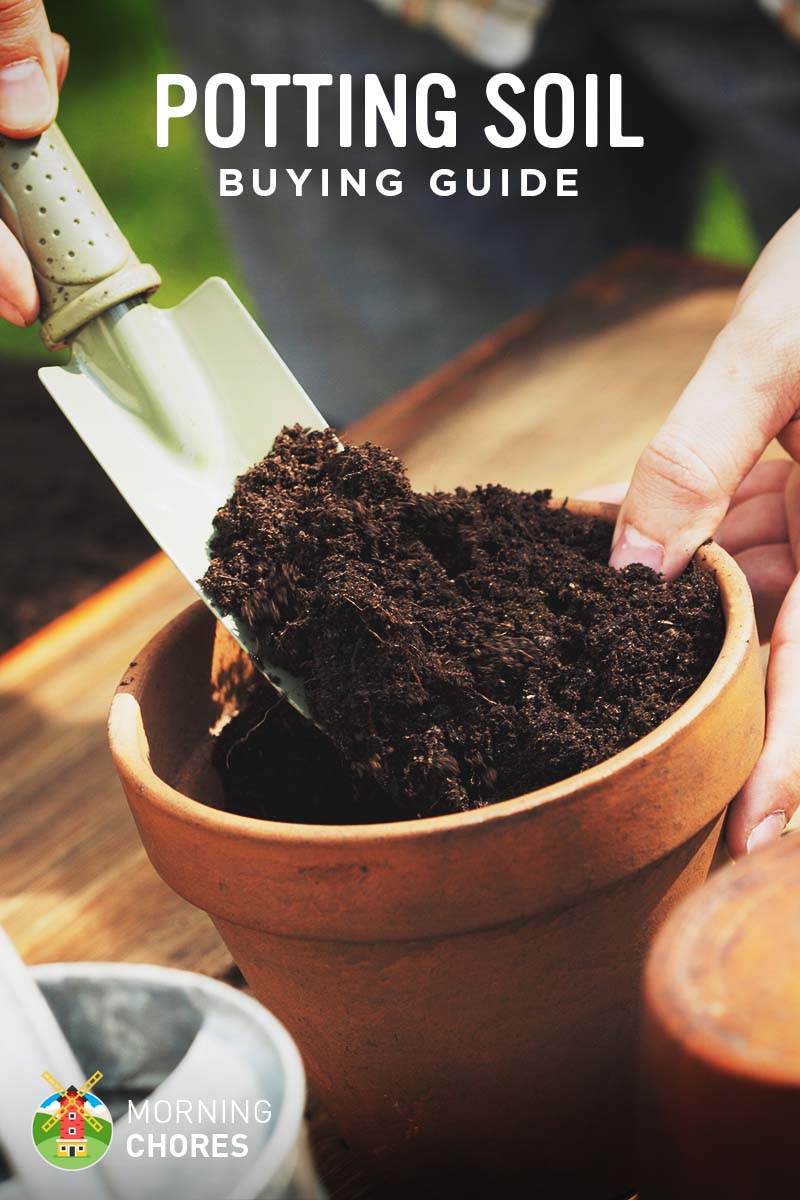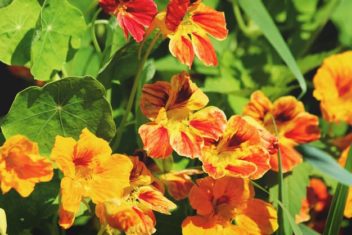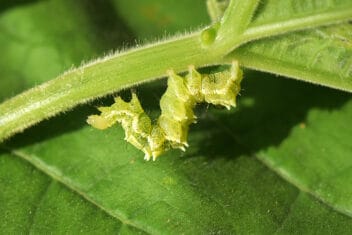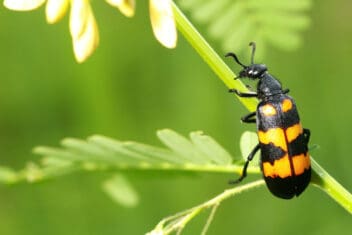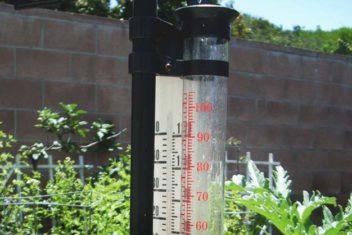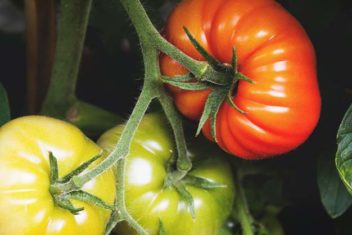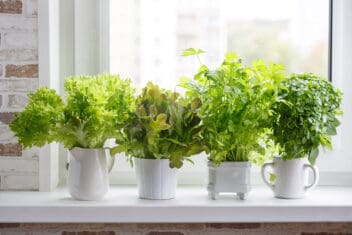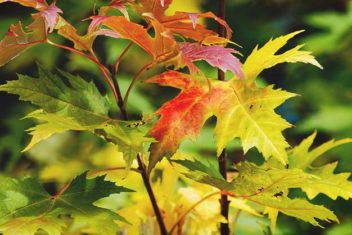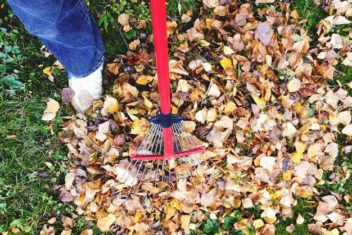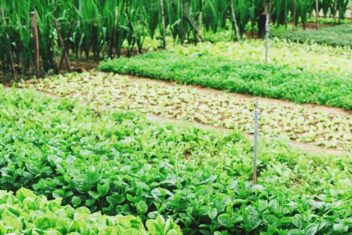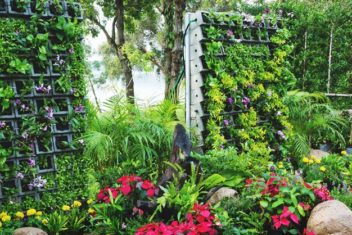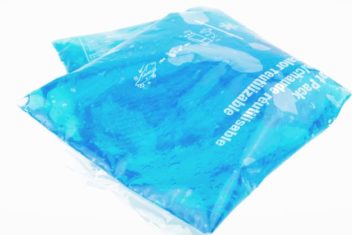Most people aren’t born with a green thumb – they acquire it through careful research, planning, and practice. One of the most important factors to consider before you start planting flowers, veggies, fruits or herbs, is what type of potting soil to use.
For potted plants, it’s even more important to find the best potting soil available for proper drainage, nutrition, and growth, as these plants are confined to a smaller space.
Potting Soil Versus Potting Mix
Before you choose a potting soil for your plants, you need to know the difference between potting soil and potting mix. The terms “potting soil” and “potting mix” are often used interchangeably, so it can be confusing. Potting soil and potting mix are both specifically designed to grow plants that are cultivated in containers and planters, but there are some differences between these two mediums.
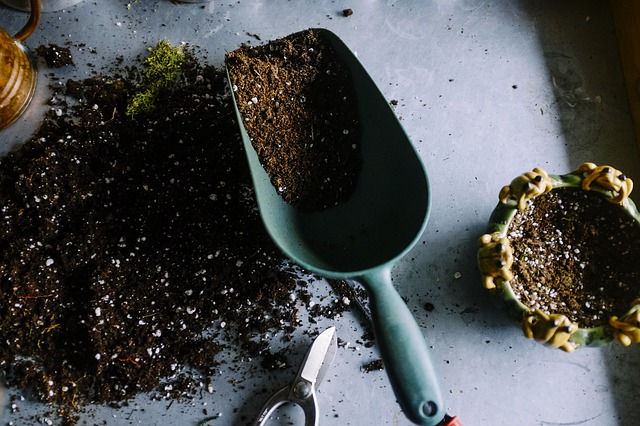
Potting Soil
Potted plants are more susceptible to root rot and other diseases because of the water not being able to drain away as effectively as it normally would in a garden bed. Unlike normal garden dirt, potting soil contains materials like peat moss, aged or composted bark, coconut coir, perlite, pumice, and sand, which allow air and moisture to permeate properly through the soil and stop the soil from becoming heavy and dry.
The soil will also contain macronutrients such as nitrogen, phosphate, and potash, and micronutrients like calcium and magnesium. These essential minerals create a stronger root system and ultimately more vibrant flowers, and better vegetables and fruit.
While potting soil is ideal for a wide range of potted plants, it may not be the best medium for seed starting and seedlings. Potting soil manufacturers differ in their soil blend and it may not contain the fertilizer that younger plants need to thrive.
Another benefit that is gained from using potting soil is that the natural ingredients used in the soil will last for a long time, so you can re-use the potting soil.
Potting Mix
Potting mix also contains composted bark, sphagnum peat moss, coconut coir, vermiculite, or perlite but may have a higher level of beneficial macronutrients and animal-based ingredients: earthwork castings, bat guano, or fish meal like the Foxfarm Ocean Forest Potting Soil. These ingredients all work together to provide the necessary nutrients that are especially important for younger plants.
The downside to using a potting mix is that it is not as long-lasting as potting soil as the animal-based ingredients can break down over time, which makes the mix unusable as a growing medium if you keep it for too long. So always check the use-by date. Plus, those ingredients can make the potting mix very smelly.
Sterile Potting Mix
Another difference between potting soil and potting mix is that the potting mix has been sterilized and will not contain any pathogens that can cause plant diseases, but potting soil is not sterilized. It contains raw natural ingredients. If your mature plants struggle with diseases or pests, you can sterilize the soil in a few easy steps.
The 7 Best Potting Soil Options
- Miracle-Gro Potting Mix
- Black Gold Organic Potting Soil
- Espoma AP8 8-Quart Organic Potting Soil
- Hoffman Organic Cactus and Succulent Soil Mix
- Foxfarm Ocean Forest Potting Soil (Our Top Pick)
- Michigan Peat Garden Magic Potting Soil
- Sun Bulb Better-Gro Orchid Bark
Our Top Pick for the Best Potting Soil
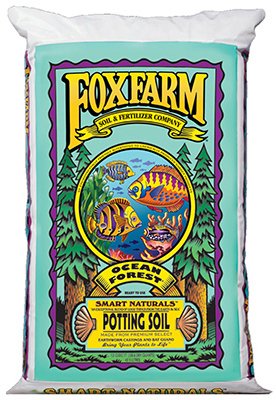
Our top pick for the best potting soil is the Foxfarm Ocean Forest Potting Soil.
Foxfarms’s Ocean Forest potting mix is the best option if you are just starting out, as it provides an excellent base for most plants and is incredibly easy to use. With well-rounded nutrition and good water retention, it’s the best choice for beginning gardeners.
Check the price on AmazonHow to Choose the Best Potting Soil for Your Plants
There are a lot of different types of potting soil available, but not all of them are well suited for your potted plants. To be able to find the right type of potting soil for your flowers, vegetables, or herbs, you’ll need to consider a few different aspects of the soil.
Nutrient Mix
The three key minerals that plants need are nitrogen, phosphorus, and potassium. Potting soil and potting mix will be labeled with the percentage concentration of these macronutrients. These ingredients are referred to as NPK which stands for Nitrogen, Phosphorous, and Potassium.
Some manufacturers like the Miracle-Gro Potting Mix uses potash which refers to a potassium-bearing mineral. For example, a NPK mix may include 21% nitrogen, 11% phosphate, and 16% potash, or 7% nitrogen, 2% phosphate, and 2% potash. The more balanced the NPK mix is, the better the potting soil is for your plants.
Good potting soil will also have a variety of nutrients for feeding plants, as opposed to just one or two. Look on the bag for a list of included ingredients; a potting soil that just says ‘fertilizer’ on the bag probably doesn’t include many different nutrients.
Remember: a trustworthy brand will be open about what is in their product by including a detailed label.
Potting Soil Density
The best potting mix should be light and fluffy and it should not be too dense when it is wet. Otherwise, the roots of the plant may get smothered. They could also develop rot or mold.
If the soil becomes really hard after watering, your plant won’t be able to expand and grow its roots through the soil.
To judge the density of the potting soil or mix before you make a purchase, just pick up the bag! It shouldn’t be too heavy – a very heavy bag of potting soil, before it’s been exposed to moisture, usually means it has a lot of fillers like sand or mulch, which leads to a dense, thick soil that isn’t suitable for most sun-loving plants. Fillers also take up valuable space which could be used by fertilizer.
Organic or Non-Organic?
Organic products are gaining popularity, but is it worth it to go organic with your potting soil?
Honestly, it’s a personal preference.
Personally, I’ve had good luck with natural ingredients, so I usually look for potting soil that uses natural fertilizers like seaweed, worm castings, and compost. One of the best benefits of these fertilizers is that they can be used on just about any type of potted plant, from veggies to herbs to flowers.
It’s also easier to supplement these fertilizers yourself, using your own compost or seaweed mixture, as the soil starts to break down.
If you are an organic gardener, a potting soil like Black Gold is certified by the Organic Materials Review Institute (OMRI), which means the potting soil contains 100% natural ingredients.
Plant-Specific Choices
Some plants will require special potting mix in order to thrive.
If you have a unique plant such as a cactus or other succulents, roses, or orchids, you may want to find a specific potting soil for their growth such as the Hoffman Organic Cactus and Succulent Soil Mix. Plant-specific potting soils for these unique plants will have specialized nutrients and density ratios to ensure they are healthy.
This is also true if you are trying to start plants from seeds.
Lightweight potting soil that contains fertilizer is perfect for seed-starting as it allows more sunlight and warmth to reach the seeds, giving them a better chance at germination.
Best Potting Soil – Reviews
1. Miracle-Gro Potting Mix
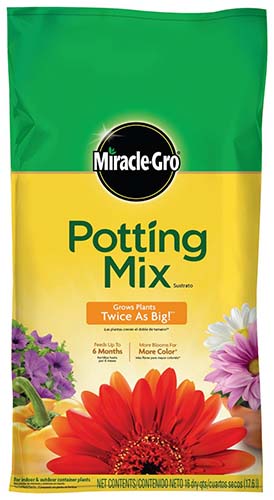
The Miracle-Gro Potting Mix is the gold standard in the potting world and it is so popular thanks to its affordable price and great track record for growing plants big and beautiful. This potting mix is suitable for both indoor and outdoor use.
This product uses peat moss, perlite, fertilizer, and a wetting agent to create a suitable potting mix for plants. The specific ingredients may vary depending on where the bag was made.
This potting soil is guaranteed to include at least .21% nitrogen, .11% phosphate, and .16% potash for fertilizing needs.
Pros
- Affordable option
- Easy to find at most stores
- Designed for also all potted plants
- Easy to use
- Results are guaranteed or you can get a refund
- Product is certified by the Mulch and Soil Council
Cons
- Can have a strange odor
- Fertilizer can attract flies
- Not organic
- May get too dense with a lot of water
2. Black Gold Organic Potting Soil
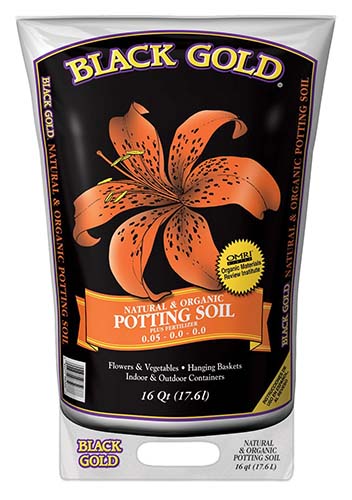
This organic potting soil from Black Gold uses worm castings, perlite, pumice, and organic fertilizers to care for your plants. All ingredients are certified by the Organic Materials Review Institute (OMRI).
This mix includes Black Gold’s RESiLIENCE silicon compound to help reduce wilting, encourage stronger growth, and produce earlier flowers in your potted plants. This addition is also said to increase moisture retention in the soil.
Upon purchase, this soil has a pH level that is right down the middle: around 8.5. Additional products can be added to customize the pH as needed.
Pros
- Certified organic product
- Excellent drainage and aeration
- Multiple fertilizers for growth
- Good ingredients for moisture retention
- Product has a nice earthy smell
Cons
- Product can attract gnats
- Wet soil can grow spores
- Expensive price
3. Espoma AP8 8-Quart Organic Potting Soil
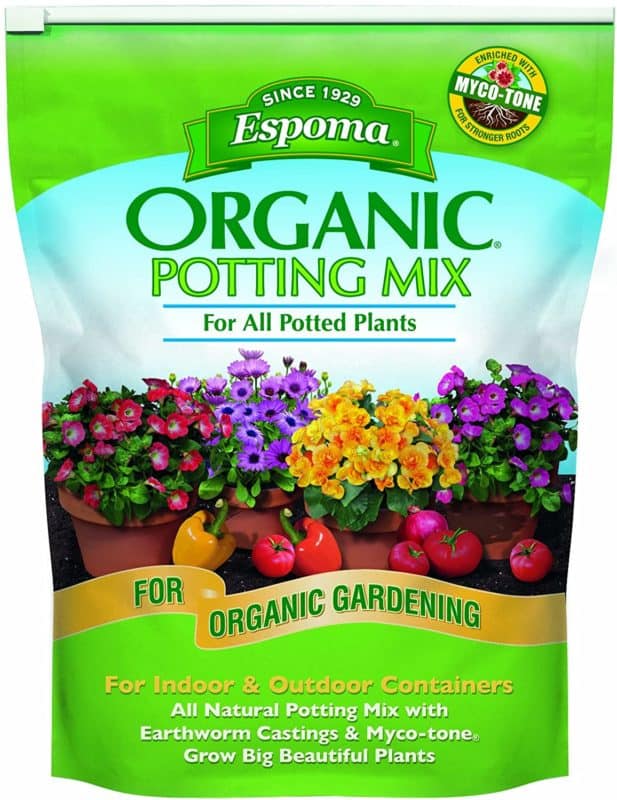
This potting soil from Espoma is a blend of peat moss, peat humus, Espoma’s Myco-tone, worm castings, and perlite. All ingredients are organic and the company states that their products are safe for use around pets.
This potting soil uses Espoma’s proprietary Myco-tone addition, which utilizes 11 different strains of mycorrhizae to promote root growth and reduce stress in your plants. This can be especially useful if you need to transplant a plant outdoors or to a new pot.
The label of this product stats that there is a guaranteed analysis for the fertilizers. You can expect to get a least 7% nitrogen, 2% phosphate, and 2% potash when you purchase a bag.
Pros
- Organic ingredients
- Not attractive to bugs
- Excellent fertilizer ratio
- Small, family-owned business
Cons
- Poor moisture retention
- Expensive product
- Soil is very loose
- Not certified
4. Hoffman Organic Cactus and Succulent Soil Mix
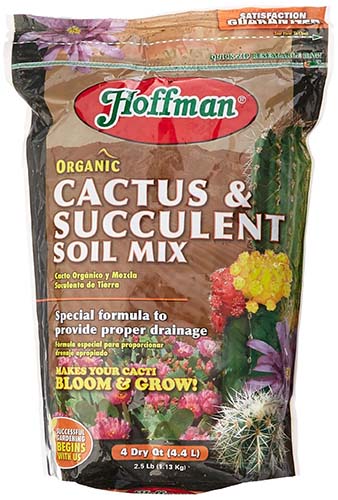
The Hoffman Cactus and Succulent Soil Mix is specifically designed for cacti and succulents. It uses a blend of Canadian sphagnum peat moss, reed sedge peat, limestone, perlite, and sand to create a mix that is suitable for these unique plants.
This is an organic mix that is designed to provide excellent drainage for these plants that don’t need a ton of water. The pH is also already balanced for succulents, so the soil is ready to use right out of the bag.
Pros
- Best choice for succulents
- Organic ingredients
- Excellent drainage
- Ready-to-use
Cons
- Poor moisture absorption
- Few sizes options available
- Not certified organic
5. Foxfarm Ocean Forest Potting Soil

Foxfarm Ocean Forest Potting Soil is made for containers and contains forest humus, sandy loam, peat moss, and natural fertilizers including bat guano, worm castings, ocean fish, and crab meat. The product has a pH of 6.3-6.8 to allow the fertilizer to work as efficiently as possible.
The fertilizers in this bag are meant to last over a month, so even as the soil breaks down, no additives are needed. This makes this soil a good choice for beginners or someone who doesn’t have a lot of time to garden.
Pros
- Several different types of fertilizers
- Good value
- Ready-to-use right out of the bag
- Long-lasting
Cons
- Bag may include large pieces of organic material
- Soil can heat up a lot in the sun
6. Michigan Peat Garden Magic Potting Soil
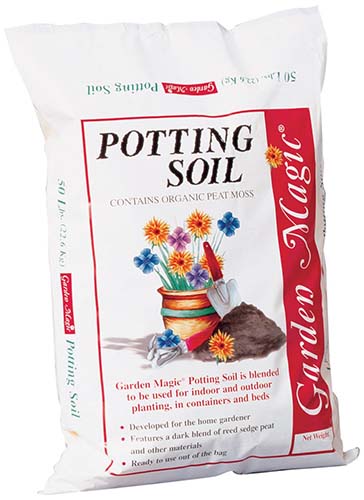
Michigan Peat Garden Magic Potting Soil mix is ready to use straight from the bag and uses a dark blend of materials including reed sedge peat. perlite, and sand. Their potting soil can be used in pots or garden beds indoors or outdoors.
Michigan Peat is a smaller company that’s been in business for over 50 years, and they spent a fair amount of time developing their potting soil so it would offer good nutrition, water retention, and drainage in one package.
Pros
- Great moisture retaining properties
- Designed for use indoors and outdoors
Cons
- Soil may get too moist due to high water-retentive abilities
- Dark-colored soil can heat up quickly
- Low amount of fertilizers
7. Sun Bulb Better-Gro Orchid Bark
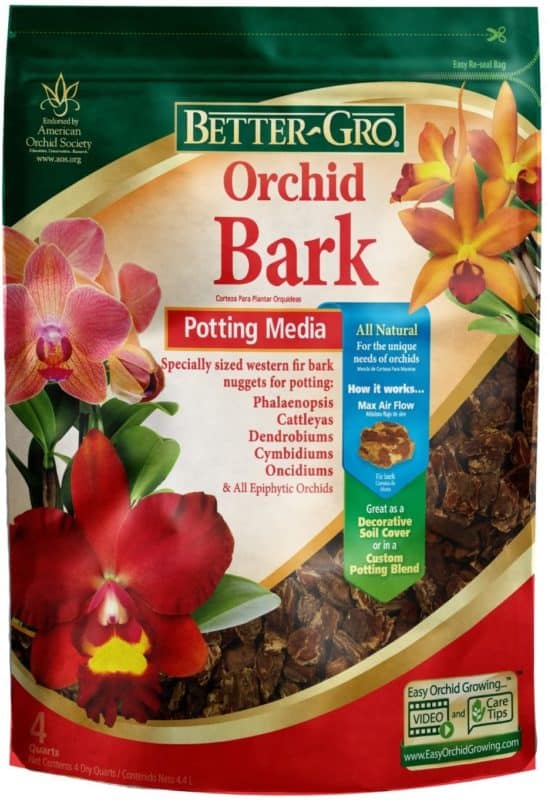
Orchids are difficult, picky flowers that require a lot of special care. This includes unique potting soil requirements. Sun Bulb’s Better-Gro Orchid Bark potting mix is designed specifically for potted orchid flowers.
It is perfect for potting, re-potting, or spot refilling, making it the ideal emergency potting mixture. This blend is suitable for any epiphytic orchid.
Pros
- Specialized care for orchids
- Designed for orchid growers
- Superior drainage for root growth
- Can also be suitable for a wide variety of other ornamentals
Cons
- Expensive
- Dark-colored soil can heat up quickly
- Large particles can cause trouble for smaller plants
Our Top Pick for the Best Potting Soil

Our top pick for the best potting soil is the Foxfarm Ocean Forest Potting Soil.
Foxfarms’s Ocean Forest potting soil is the best option if you are just starting out, as it provides an excellent base for most plants and is incredibly easy to use. With well-rounded nutrition and good water retention, it’s the best choice for beginning gardeners.
Check the price on AmazonFrequently Asked Questions
- Can potting soil be mixed with garden soil?
While you can mix potting soil with garden soil, it is not recommended for potted plants, but it is best used for a raised garden bed, as the potting soil may be too heavy and become compacted.
- Does garden soil have the right pH balance?
Most potting soils are slightly acidic and suitable for most plants, though specific mixes are available for plants with particular needs. Fox Farm Ocean Forest is pH adjusted at 6.3 to 6.8 to allow for optimum fertilizer uptake for most plants.
Garden soil may not have the right pH level. If you have run out of potting soil, you will need to determine the pH balance of the ground soil. Testing the garden soil’s acidity with a soil pH tester is a quick and easy way to work out the pH level.
- Do you need to add fertilizer to potting soil?
If you want to plant vegetables from seed or transplant seedlings, these types of plants need extra tender loving care, so potting soil already has a good balance of macronutrients and micronutrients like calcium and magnesium, which means you will not need to use extra fertilizer.
But as containers are quickly depleted of nutrients due to regular watering, a fresh potting mix that contains fertilizer will need supplemental nutrients. Midway through the growing season, you can apply a water-soluble fertilizer such as fish emulsion or seaweed every two weeks which will add extra nutrients to the soil.
- Can you reuse potting soil?
Used potting soil can be rejuvenated, though there is an increased risk of disease if it is not done properly. If the mix smells bad or is moldy, spread it out in the sun and allow it to dry in order to kill pathogens. Add fresh peat moss or coconut coir to make the soil lighter.
Nutrient-rich additives can include compost, earthworm castings, bone meal, and kelp meal. Used potting soil can also be recycled into flower beds, vegetable plots, or the compost pile. Don’t reuse soil from a container where a diseased plant grew.
